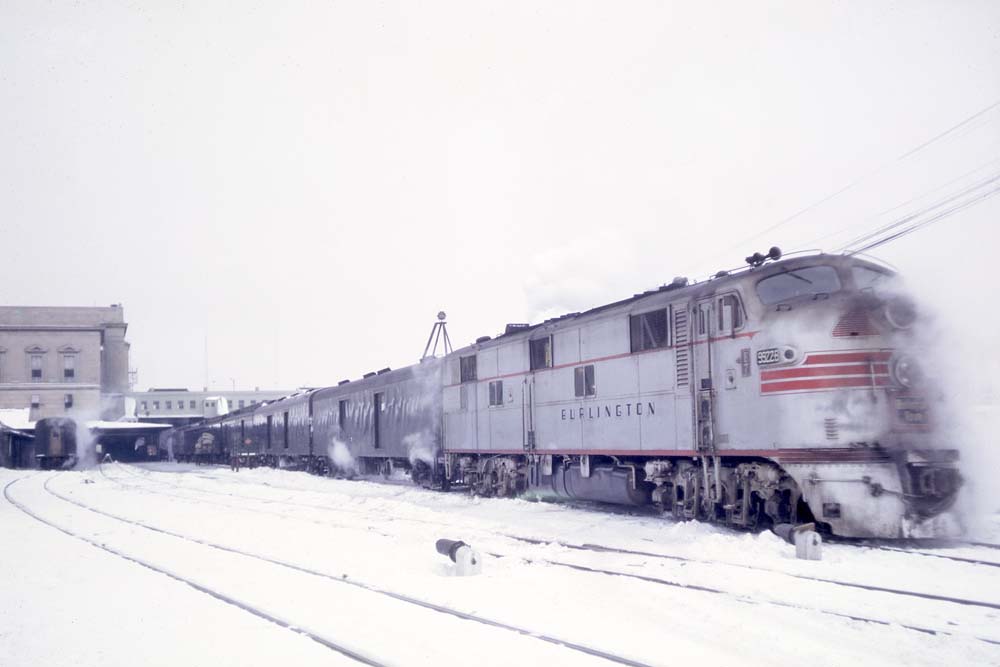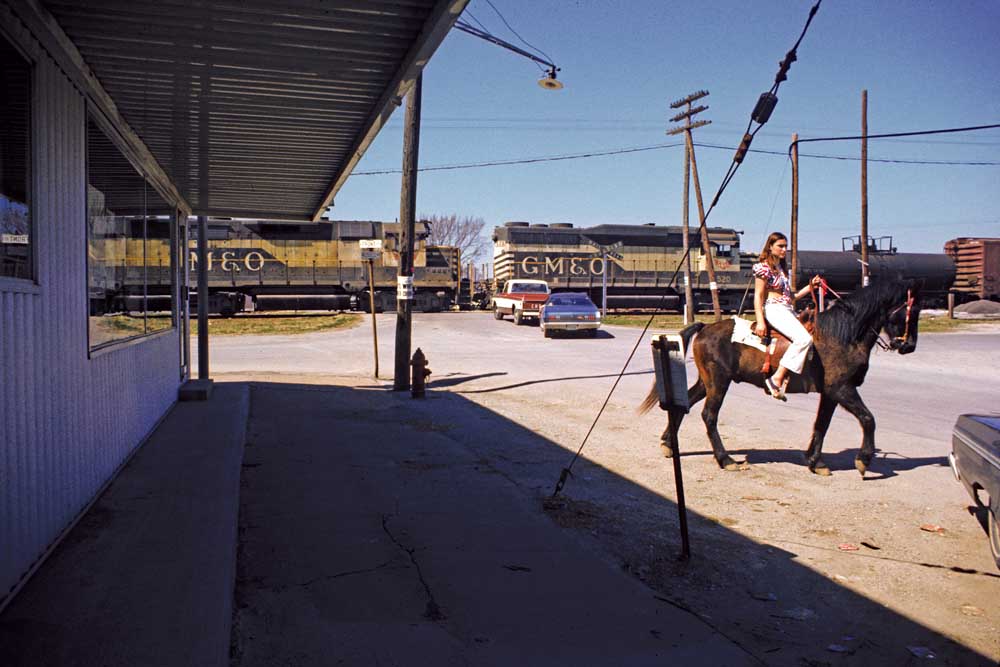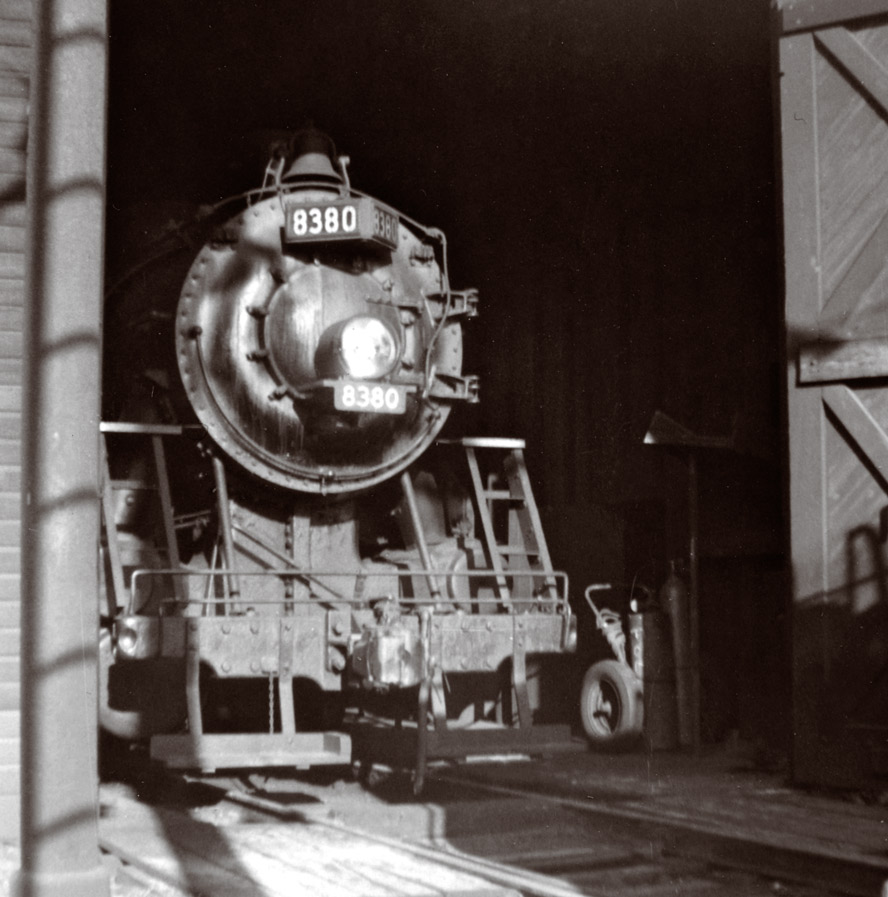That eye was definitely twinkling one day, a few weeks before summer vacation, when I arrived at Dad’s shop for work. He told me to keep my school clothes on and go see the section foreman and ask for a job. Believing my poor father had lost his mind, but an obedient son to the end, I made my way toward the nearby tracks and the section shed. Along the way, I met a group of my buddies who were also after section-crew jobs. As we approached the shed, a motorcar came down the track carrying the crew home. The boldest member of our group asked for, and was directed to, the gang foreman, who fixed us with a cold stare. As the smallest and youngest, I was, of course well to the rear. The foreman, obviously a man of few words, said he wasn’t in the market for any would-be gandy dancers that day, and we all turned and made our retreat. As we left, the foreman softly called me back and asked if I was perhaps Johnny Allsen’s boy. I owned up to this, then he told me I should report the morning after school was out and be ready for work with gloves and dinner bucket. I arrived back at the machine shop a while later still in shock, and informed Daddy of my news. No explanation was forthcoming, and as I watched my father out of the corner of my eye, he whistled happily at his work.
When I reported for work my first day, the foreman took me to the timekeeper’s office to be officially hired by the NYC and entered on the books as a track laborer. When I was asked if I was at least 16, to my surprise the section foreman himself spoke up and attested to that fact. I then moved on to what would be the first of three summers working between the rails.
The fact that I even survived those first few weeks was due only to the tolerance and benign neglect shown by not only the foreman but also by the other members of the gang. I was, however, a willing worker in spite of my size, and, having worked around grown men since I was 12, I knew when to keep my mouth shut and not ask too many dumb questions.
For the first few days I was assigned the “tend the larry,” the cart bearing spikes, ties, and other items. I pushed this along as the gang advanced and also made sure the water keg was kept filled from nearby farms and houses. After a short time, some other fellows near my own age joined the gang, and I was no longer the only youngster. By the time we returned to school, I had learned to pull my own weight and could remove, place, and tamp a crosstie, and heave on a lining bar with the rest of the crew.
Next summer, I again worked on the local section gang. Owing to a tremendous growth spurt, I now was a full foot taller and starting to fill out the resulting frame. I remember carrying two full dinner buckets that summer, plus a large Thermos of milk just to get me through a day of work. In this summer, I was able to take a bit more interest in what was going on around me and was accepted by the old-timers as a part of the team. However, that acceptance did not extend to trusting me alone with their lunches!
After graduation in 1956, I spent my final summer on the NYC as part of the “extry gang” working across the Toledo/Elkhart Division, a far cry from the local section’s work. We replaced and repaired track, switches, signals, and trestles along a 100-mile stretch of the four-track main line. As part of the tamping crew, I followed a large ballast machine while bucking an air-powered tamping gun that weighed almost as much as I had two summers before. The work was hard but exhilarating and, for one who loved the trains as I did, romantic and exciting.
As the summer of ’56 wore down, a steel strike forced layoffs of many track workers and I was caught with too little seniority to survive. I could have gone back to the local section but that would involve “bumping” someone else, which did not really appeal to me. So, I moved on to other things and never worked between the rails again.
My three summers as a gandy dancer left many memories: Watching the last of the great steam locomotives as they finally succumbed to diesels; seeing a Hudson pick up water on the fly from the “pan” at full speed; and the sheer excitement of feeling the earth shake as the giants thundered by on the main line. Even the lowliest track laborer like me felt a thrill of corporate pride when the 20th Century Limited roared by!
Years later, I asked my father how he knew I would get hired on that fateful day back in 1954. The answer didn’t surprise me, knowing Dad as I did. A significant debt has arisen in a poker game, with the section foreman on the short end. Dad wrote it off in return for me getting any chance. I don’t know what he saw in me that year that gave him to understand that it was time I left the comfortable job in his shop and move on to something else, but I’m glad he did. Even today, just a whiff of creosote on a summer day evokes memories of three great summers between the rails.













Just kidding. Awesome article and remembrances of a time gone by…
Pictures, or it didn’t happen!!!
Wow! Now that was a great article on working for the railroad. As a retired engineer, I was always in awe of the ROW crews that repaired the tracks I tore up with my trains. Repairing and replacing rails, ties, and ballast is truly hard work. Too much for me, but I, of course, enjoyed the challenge of keeping ahead of the slack as I operated up and downs hills of Oklahoma.